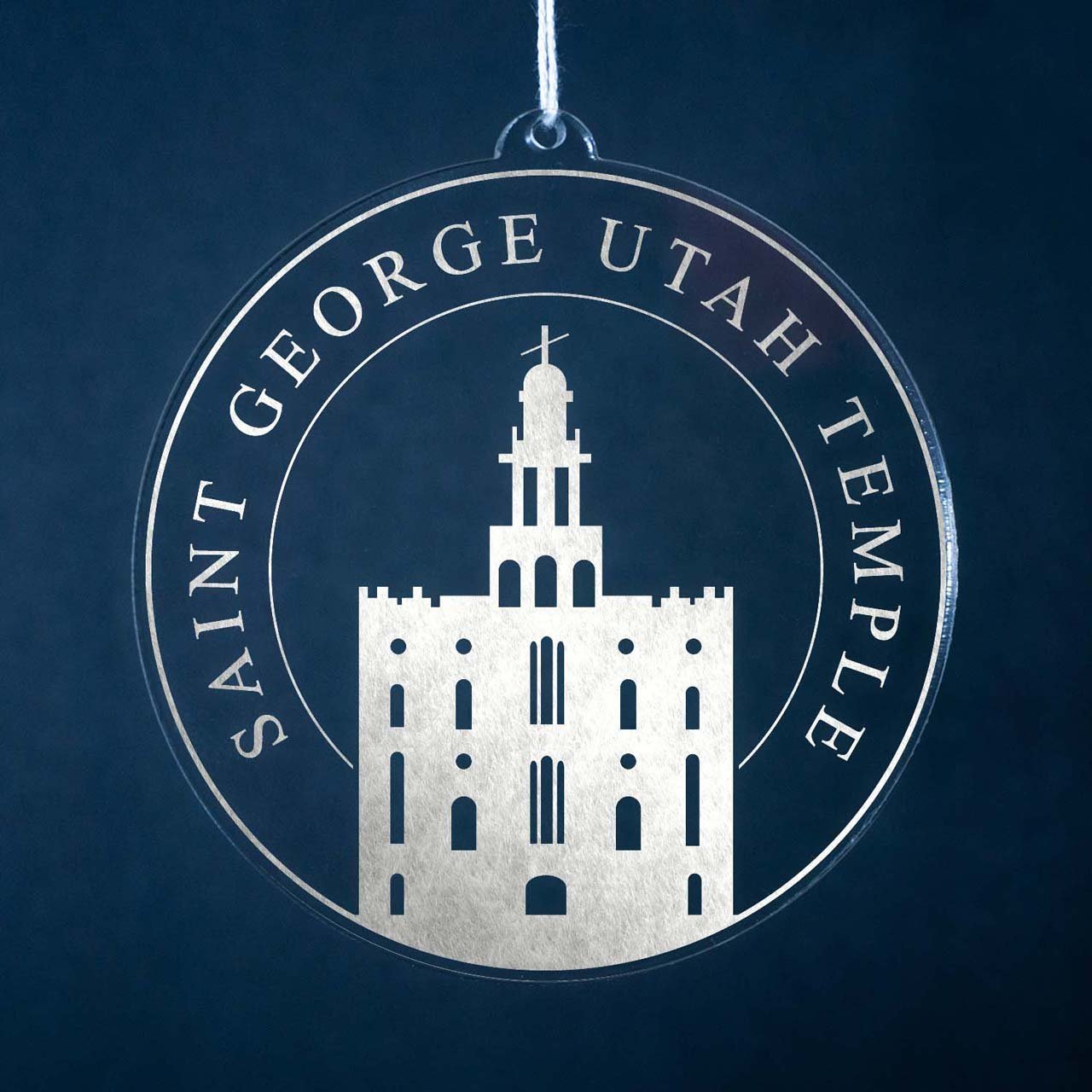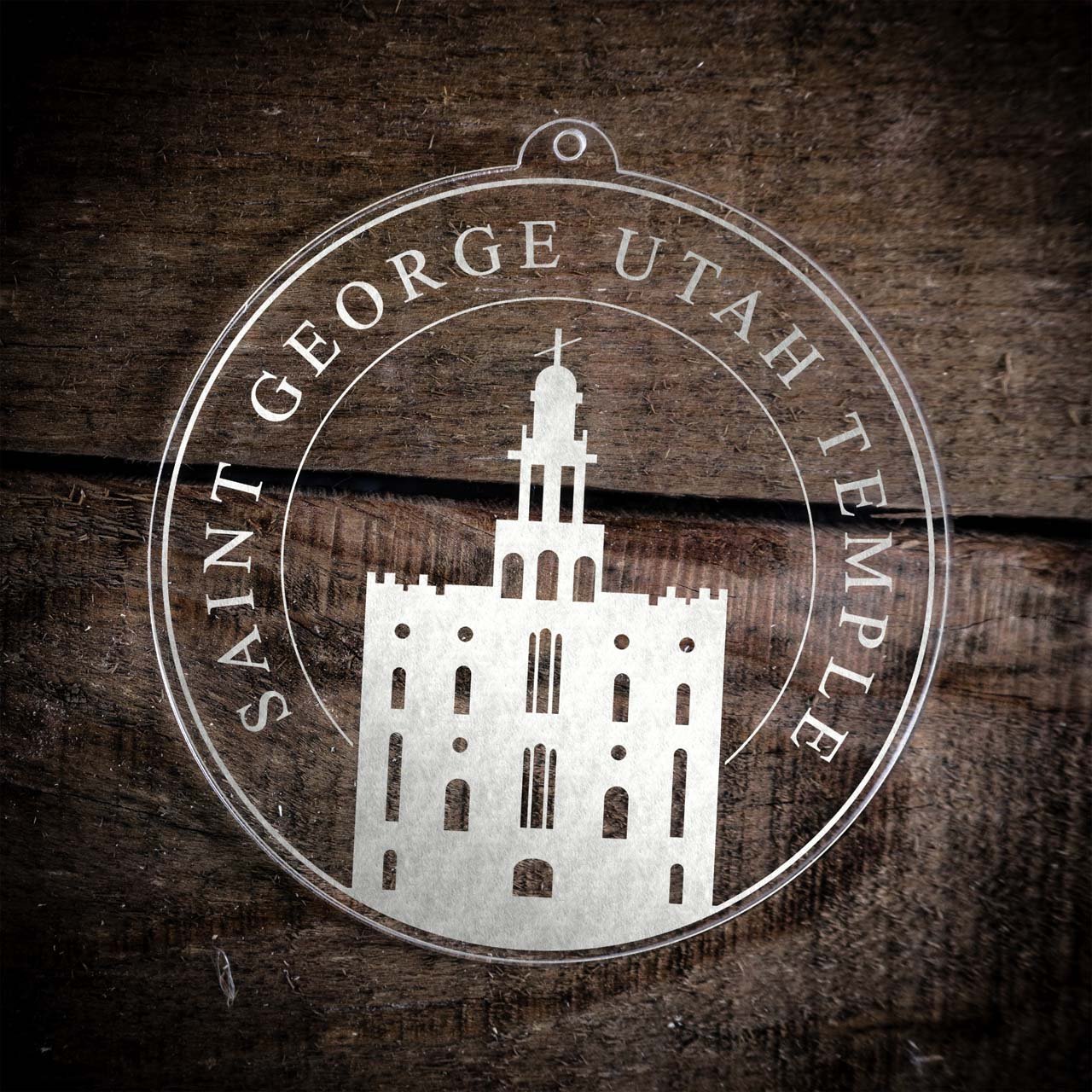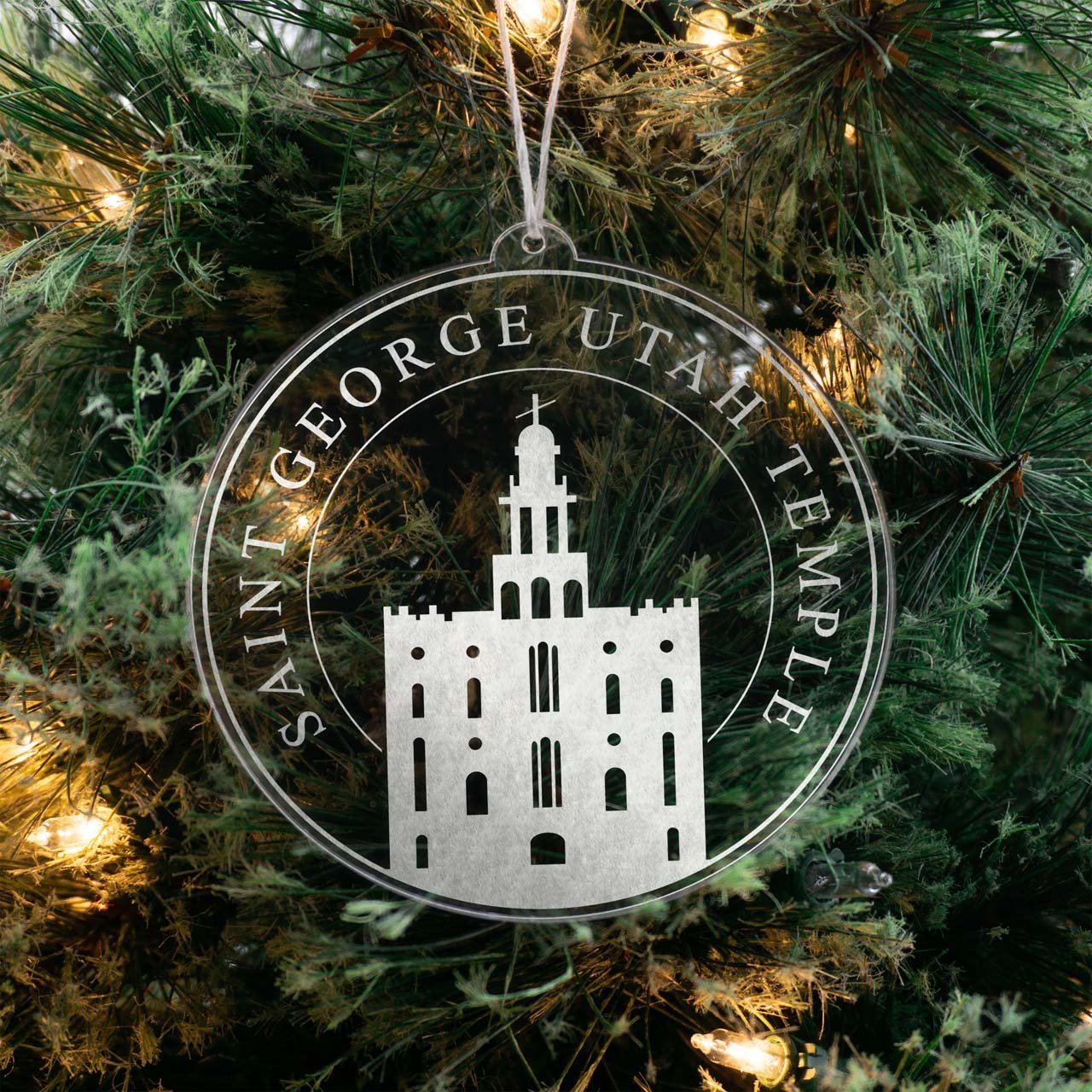Saint George Utah Temple Christmas Ornament
$17.99 Original price was: $17.99.$13.99Current price is: $13.99.
Let this ornament bring your family close together around the tree to ponder the miracle of the Saint George Utah Temple.
| Material | Transparent Acrylic |
| Construction | Laser Etching |
| Length | 4 Inches |
| Width | 3 7/8 Inches |
| Weight | 0.8 oz |
| Shipping | Usually ships within 1-2 days |
| Returns | Within 30 days of purchase |
Product Description
Made out of a lightweight and very durable transparent acrylic, this ornament will not weigh your tree down and can definitely withstand being dropped by the little ones should they get too curious around the tree. The acrylic is cut into a 4 inch circle and then laser etched with the name of the temple and a graphic depicting an artistic representation of the Saint George Utah Temple.
Get one for your loved ones to remind them that families can be together forever!
Temple Information
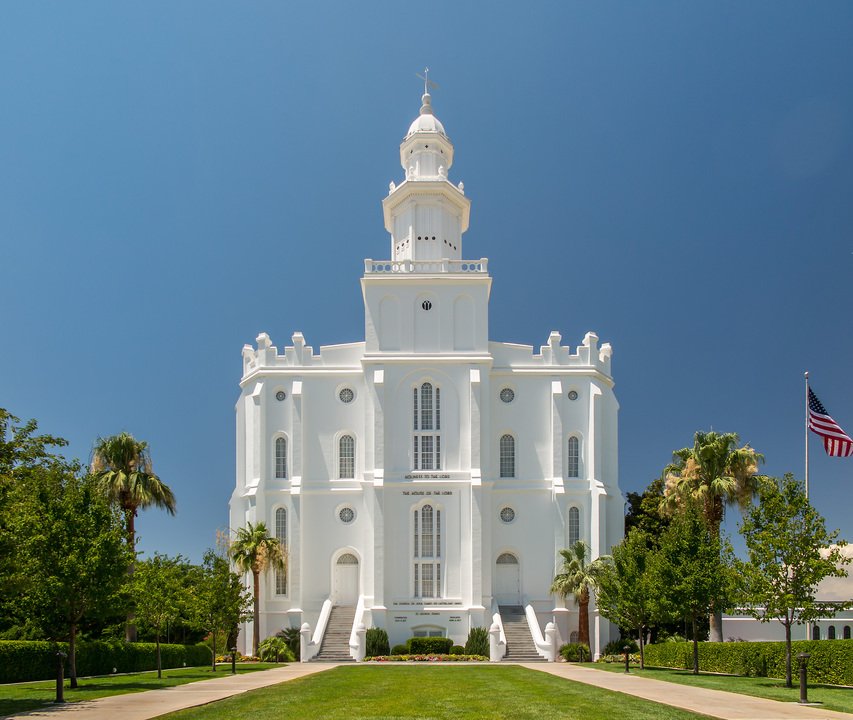
Address
St. George, Utah 84770-3699
Dedicated
Size
Temple Renovation
At a news conference held in the St. George Temple Visitors' Center on May 22, 2019, plans for the renovation of the St. George Utah Temple were unveiled including detailed renderings of the interior and exterior. The temple closed on November 4, 2019, for an approximately three-year renovation that encompasses the entire block. The reopening of the temple is expected to take place in 2022 or 2023 when the public will be invited to an open house to tour the interior of the longest operating temple of The Church of Jesus Christ of Latter-day Saints. Highlights of the project include the following:
- Temple Block. The entire temple block will be upgraded including new water features, repoured walkways, additional shade trees, and improved landscaping.
- Temple. The structural integrity of the temple and foundation will be reinforced, and all mechanical, electrical, and plumbing systems will be upgraded. Historic beauty will be restored in the architectural elements, ornate light fixtures, and tasteful decorating—all reflecting the original vision of the early Utah pioneers who built the temple. Full murals will be brought back to the endowment rooms.
- Stair Tower. The stair tower added to the rear side of the temple in the 1970s will be rebuilt and extended with a better-matching exterior to the temple. It will feature a grand staircase and two elevators accessing each floor of the building.
- Annex. The superstructure of the temple annex, also built in the 1970s, will be demolished and reconstructed taller, larger, and more complementary to the temple. Sealing rooms in the annex will be moved to the temple, and mechanical equipment in the temple will be moved to the annex. The annex basement will be fully renovated including a new kitchen, cafeteria, and laundry room.
- Entrance Plaza. On the north side of the annex, an entrance plaza with improved accessibility will be created, anchored by a water feature and flanked by gardens and seating areas. The road in front of the plaza will be raised to provide level crossing from the parking lot across the street.
- Bridal Plaza. A special exit for brides and grooms will be incorporated into the annex leading to a bridal plaza where family and friends may gather to greet the newly wedded couple.
- Visitors' Plaza. Landscaping on the east side of the temple, just north of the visitors' center, will feature a new plaza where guests can admire the historic front facade of the temple. The plaza will be lined with palm trees, filled with gardens, and accented by a tiered water feature.
- Baptistry Entrance. A separate baptistry entrance will be created on the south side of the temple by converting two of the existing windows into entrance and exit doors. A circular gathering area with benches and gardens will be incorporated into the landscaping outside the entrance.
Temple Locale
Located on a city block in St. George's historic district, the gleaming white St. George Utah Temple is a striking monument among the red sandstone buttes that characterize Utah's Dixie. Sharing the grounds is a public visitors' center, which houses a replica of Thorvaldsen's Christus. Other nearby attractions include the Brigham Young Winter Home and the St. George Tabernacle.
Temple History
The St. George Utah Temple is the longest operating temple of the Church and was the first built in Utah.
The St. George Utah Temple was originally named the St. George Temple.
The St. George Utah Temple is the first temple where endowments for the dead were performed.
The St. George Utah Temple is the only temple completed during Brigham Young's 30-year tenure as president of the Church. He purchased a winter home in the city and visited the temple site as often as possible during its construction. He gave frequent direction and stayed informed of the progress by telegram or letter when staying in Salt Lake City.
With a total of 18 sealing rooms (not all in active use), the St. George Utah Temple had more sealing rooms than any other temple until the renovation of the Salt Lake Temple in the 2020s.
The St. George Utah Temple was originally patterned after the Kirtland Temple and Nauvoo Temple with two large assembly halls featuring a set of pulpits at each end.
The presentation of the endowment was originally delivered by live acting in the St. George Utah Temple.
The swampy ground chosen for the St. George Utah Temple was packed with volcanic rock using a cannon as a pile driver on display in the visitors' center.
The St. George Utah Temple was privately dedicated on January 1, 1877, in a series of three dedicatory prayers: the baptistry by Wilford Woodruff, the main floor by Erastus Snow, and the sealing room by Brigham Young, Jr.
General Conference was held April 6–8, 1887, in the St. George Utah Temple in conjunction with the temple dedication.
The original tower of the St. George Utah Temple fell casualty to a lightning storm about a year after the dedication, leaving it badly damaged. A new tower was completed in 1883, taller and more majestic than the first.
The Founding Fathers of the United States of America appeared twice to Wilford Woodruff in the St. George Utah Temple asking why their temple work had yet not been performed on their behalves. A striking painting depicting this singular event hangs in the temple lobby (That We May be Redeemed by Harold I. Hopkinson).
Before the Mesa Arizona Temple was constructed, Arizona members performed temple ordinances in the St. George Utah Temple. Because of the numerous bridal parties that traveled the wagon road between St. George and Arizona, the well-trod path became known as the Honeymoon Trail.
In November 1928, fire broke out, destroying the St. George Utah Temple annex built in 1883. All records and furnishings were saved. Today's annex, located on the north side of the temple, was constructed in the 1950s and serves as the entrance to the temple.
The St. George Utah Temple was extensively remodeled for over a year from 1937 to 1938. The lower hall was permanently divided into progressive-style muraled endowment rooms.
Following a second major renovation project, the St. George Utah Temple nearly doubled its 56,062 square feet. It was opened to the public for an open house and formally rededicated in 1975. The progressive-style ordinance rooms that were used to present 3 live-acting endowment sessions a day, were replaced with three motion-picture ordinance rooms that accommodated 14 sessions a day.
Related Products
Related products
-
Sale!

Texas Dallas East Mission Christmas Ornament
$17.98Original price was: $17.98.$15.98Current price is: $15.98. Add to cart -
Sale!
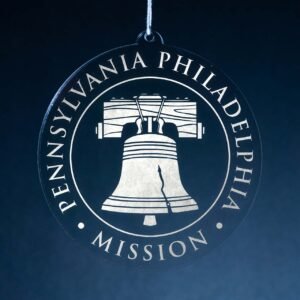
Pennsylvania Philadelphia Mission Christmas Ornament
$17.98Original price was: $17.98.$15.98Current price is: $15.98. Add to cart -
Sale!
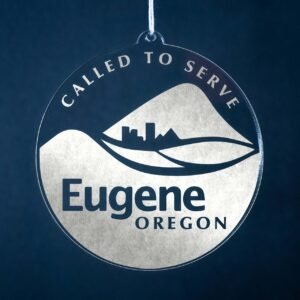
Oregon Eugene Mission Christmas Ornament
$17.98Original price was: $17.98.$15.98Current price is: $15.98. Add to cart -
Sale!

Oklahoma Oklahoma City Mission Christmas Ornament
$17.98Original price was: $17.98.$15.98Current price is: $15.98. Add to cart
